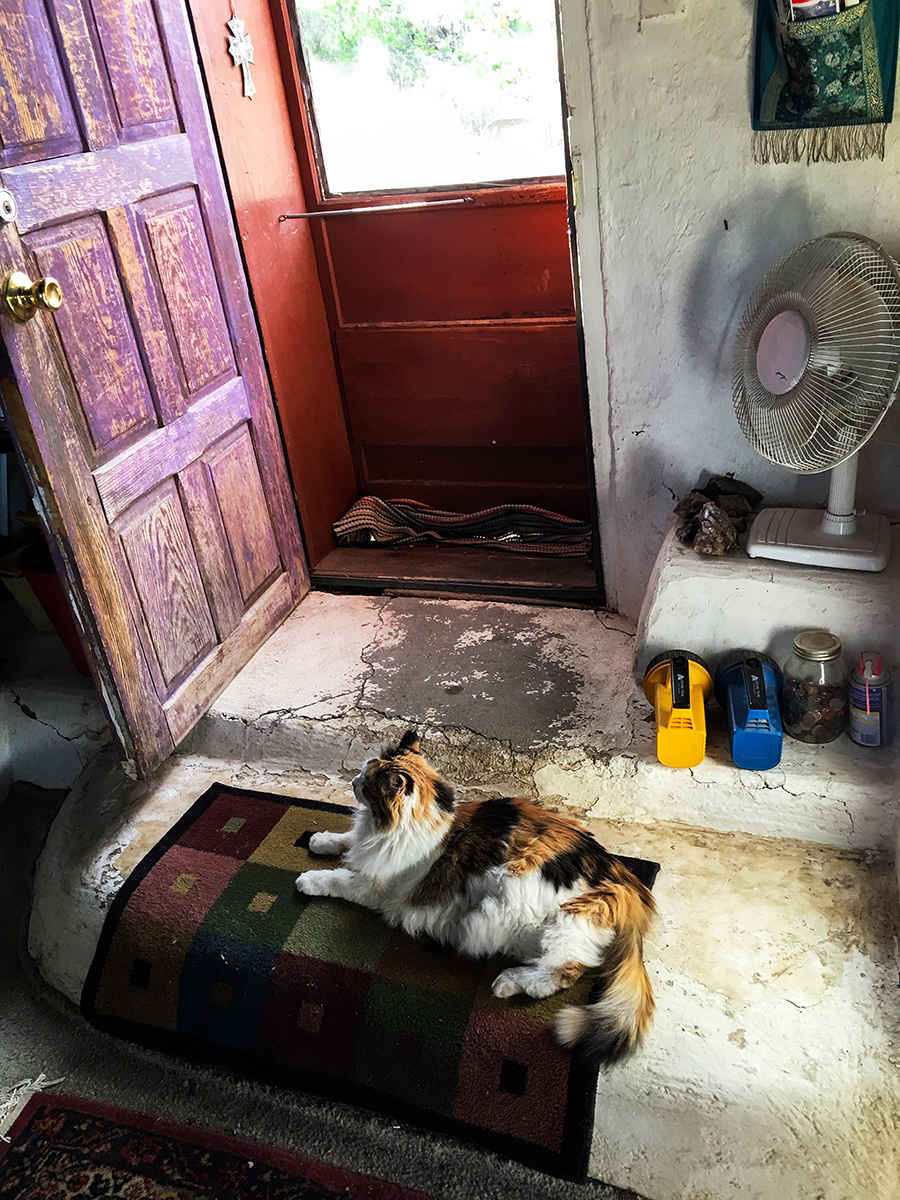For behold! From deep inside the dried mud cave with windows—look how thick the wall is in the doorway—a brief report on July at seven thousand feet. The cat, you see, has been outside, where it’s a little over ninety. Not inside these old adobe walls, however, and that is where she rests. The cracks in the concrete stucco are from water damage. Not so bad here on the floor, but consider what happens with load-bearing structures. Dry adobe expands when it gets wet, and as it dries again, a portion collapses into powder. Repeat this process over and over until the stucco is all that’s holding up the wall, and then the ceiling falls into your lap. Over the years preceding this inevitable end, the finest dust you ever saw sifts secretly over everything you own.
But all is cool and quiet here just now. Through the open screen door I hear doves and magpies—if there’s a breeze, the rustling of the elm tree leaves.


.png)
With all that fur, I hope the cat stays in during the heat of the day. Do you worry about coyote’s getting her? Even in Massachusetts that is a big concern.
Thanks for the pictures of Callie. Here, we have to keep our cats inside, we live in town and everyone drives way too fast.
They would be roadkill in no time….also, we had a black bear in our neighborhood not long ago. I think they are vegetarians though!
From what I’ve read, what adobe walls need to last forever are a good hat (weather resistant roof) and good shoes (moisture resistant foundation). The addition of a stucco coating (cement, that doesn’t “breathe” well) has been the death of many an adobe wall in California (and also NM, I would presume), since it traps moisture that enters the adobe bricks in the walls. The fix in CA is to remove the cement stucco, and apply a lime-based plaster. Not that your landlord would ever go to that expense 🙂
You must log in to post a comment. Log in now.